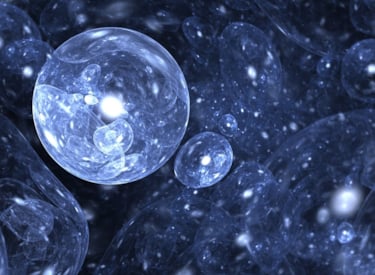Kiwa and Alliander: The Lower Flammability Limit of Hydrogen

Dutch energy distributor Alliander asked Kiwa to research and visualize the combustion of hydrogen at low concentrations. Kiwa developed a test box that can be filled with an hydrogen air mixture. Various ignition options have been installed in the test box. A special recording technique enables a depiction of ignition in slow motion as a shadow pattern. This video shows that at low concentrations, the probability of ignition of hydrogen is lower compared with natural gas.
Abstract of IGRC 2024 paper: The Lower Flammability Limit of Hydrogen

![]()
- Bart Vogelzang, Senior Consultant at Liander
- Elbert Huijzer, sr. Strategist at Liander
- Sjoerd Delnooz, Manager at Kiwa Technology
Bart, Elbert and Sjoerd presented a paper on the lower flammability limit of hydrogen during the International Gas Conference 2024. Read the abstract below or download the complete paper.
Distribution of pure hydrogen through the existing natural gas grid is one of the options to feed industry and provide a heating source for the domestic environment. Alliander demonstrates this with her project in Lochem, where 12 houses are being heated with 100% hydrogen. However, hydrogen is considered to be a highly flammable and explosive gas. In most literature no distinction is made between the flammability limits and the explosion limits, leading to the common understanding that hydrogen/air mixtures of 4% and upwards are explosive. Furthermore, the necessary ignition energy is commonly perceived as extremely low.
In 1952, The US Bureau of Mines published the article ‘Limits of flammability of gases and vapours’. Their research shows that hydrogen in a mixture between 4% and 6% only ignites molecules that are directly above the burning molecule. Between 6 % and 9 % the neighbouring molecules will also be ignited, and only above 9 % hydrogen in air the flame will spread in all directions. Unfortunately, this knowledge did not become common, and much literature states that hydrogen can explode at 4% in air.
Kiwa Technology realized a test setup to visualize the research explained above. This resulted in high-speed videos, made from ignition of both hydrogen and natural gas at differing concentrations. These videos show that at low concentrations, the probability of ignition of hydrogen is lower compared with natural gas. It was discovered that in practice in this test set up, it was not even possible to ignite hydrogen at concentrations up till 6%. This can be of particular relevance for the safety of service engineers and firefighters. Currently, explosion limits (LEL/UEL) of flammable gases, such as hydrogen, are determined by the detachment and upward movement of the flame, or the formation of a halo in a test-tube. This can also be observed at the lower percentages as described above. There is a huge difference in risk appreciation whether a mixture will only burn (upwards, sideways or downwards) or produce the amount of combustion gases that can lead to an explosion with damage.
Alliander and Kiwa Technology urge the international research and standardization community to conduct research to diversify in differing practical implications of flammable and explosive situations. By doing so a firm base can be created to reflect the practical outcome in standardization. Also, the possibility should be investigated to come with more fitting LEL/UEL definitions than currently given in EN 1839:2017, where flammability and explosion are considered to be the same. This may accelerate a future where hydrogen is part of the common, public energy system.
Download the complete IGRC (International Gas Research Conference) 2024 paper ‘The Flammability of Limit of Hydrogen’ of Alliander and Kiwa.
Start using sustainable energy sources
Is your company ready to reduce CO₂ emissions and contribute to climate goals? With our Energy Scan, you gain insights into opportunities to make your energy consumption more efficient and transition to sustainable energy sources.
Always up to date
Make sure you are always up to date with the latest news and developments by signing up for our newsletter about renewable energy!